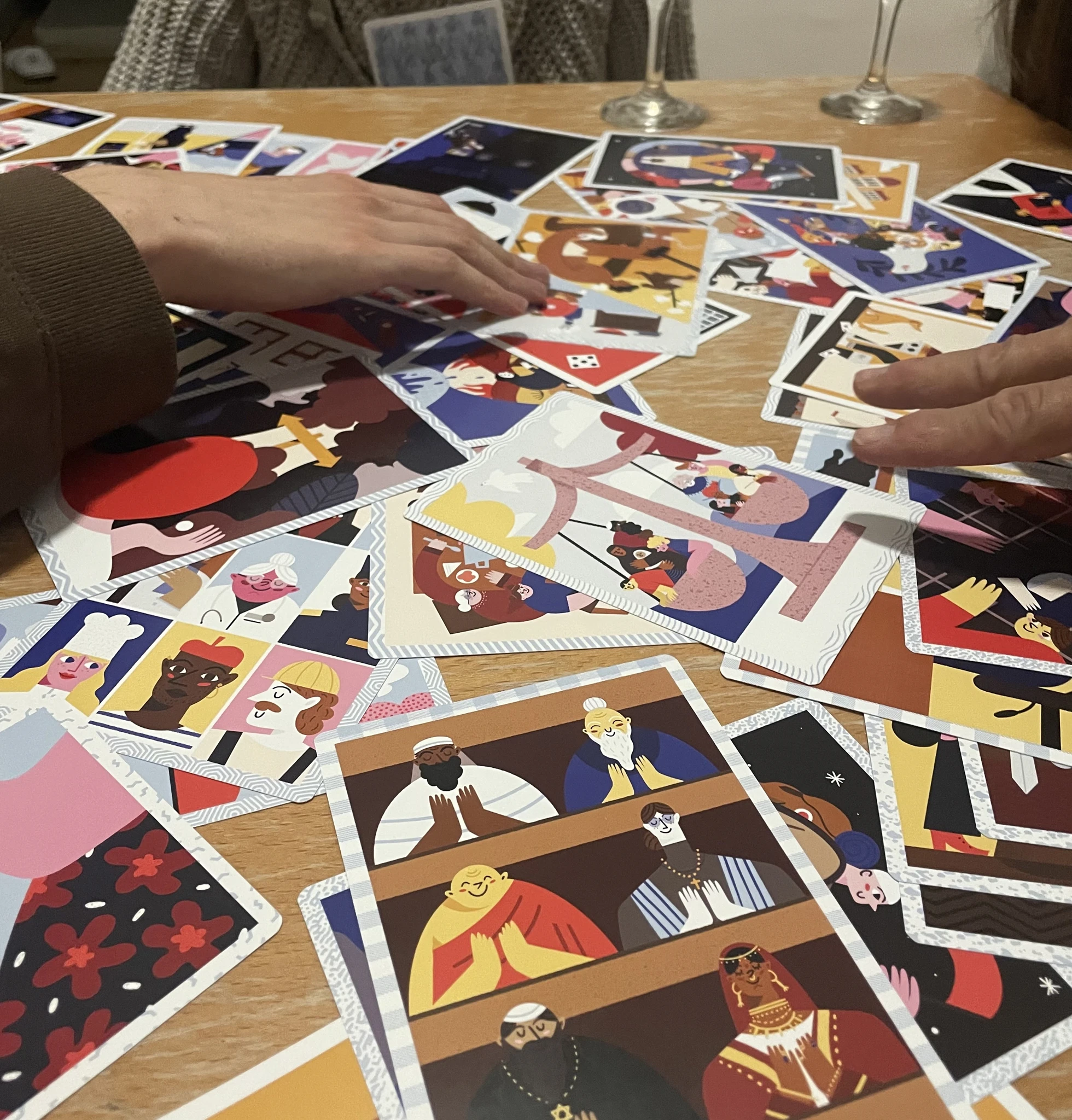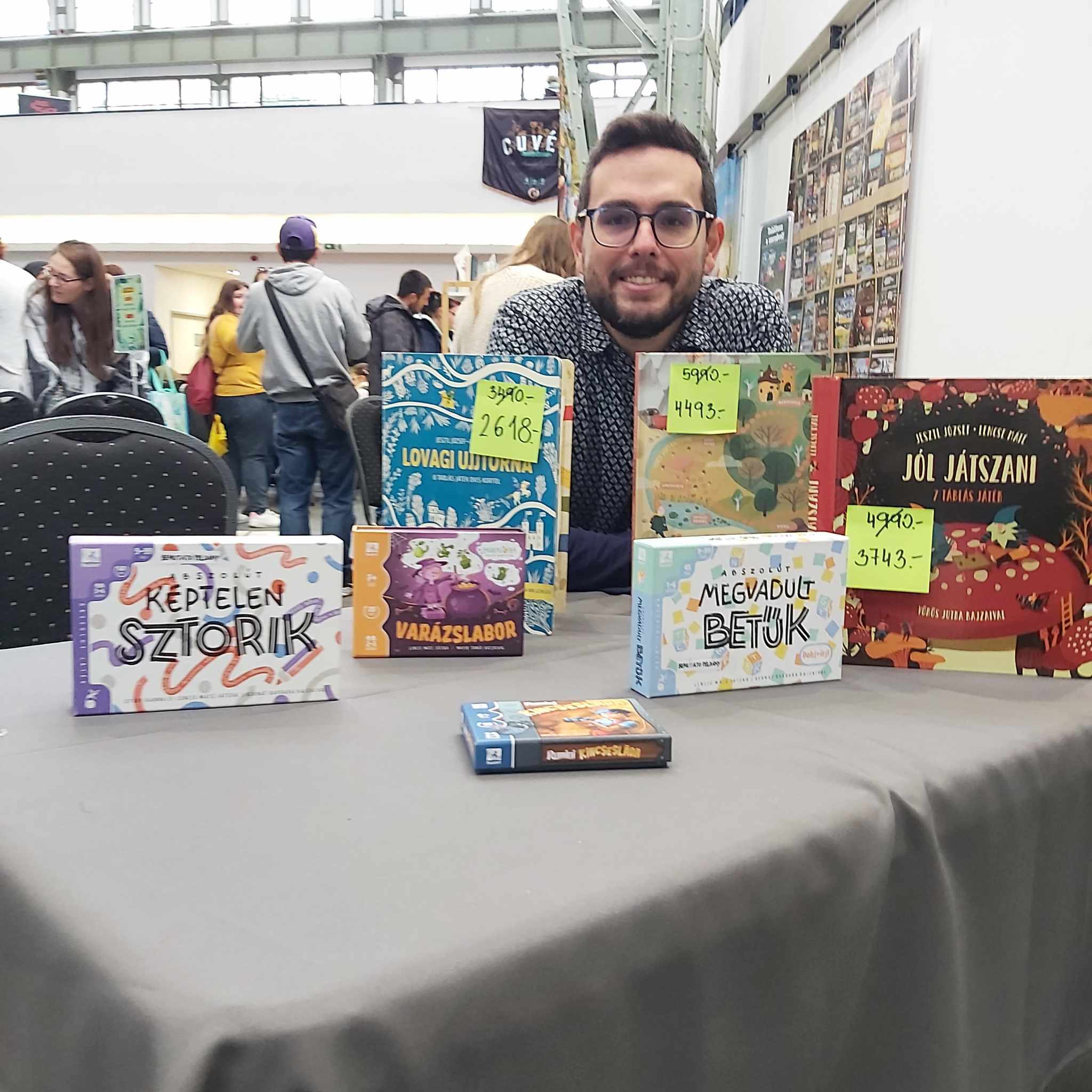A Beautiful and Thoughtful Approach
Let's start with the fact that the game is beautiful. Dorottya Kránicz's unique illustrations give the game a very special atmosphere, but I also really like that it didn't try to be too abstract. The images are to some extent easily decipherable and interpretable—yet they don't exclude freer associations either. To me, this seems like a great balance, which greatly enhances the value of the card game.

I loved that besides the rules and the cards, I didn't find anything else in the box. I searched a bit and thought about whether I felt anything was missing, but I concluded that this is exactly the kind of creativity I'm looking for: there aren't a million tools, just expressive cards and variations for the game—five in total. These are short, light, fast-paced variations. The rules of the game are also brief, ranging from 1 to 5 paragraphs. It's not pushy, doesn't ask for much, as if the rules themselves are saying, "Alright, you've read it, now go play."
Familiar Yet Fresh Gameplay
The games are built from familiar panels. With such beautiful and unique images, a gameplay similar to Dixit is a natural fit, but collecting sets or linking pictures also makes perfect sense. There's a lot of emphasis on speed, and luck also plays a significant role. The descriptions do not cover every game situation, and I initially wondered if these were mistakes, as not everything is decisive and not all is regulated.
However, I concluded that this too is inherent to the game, since the game is merely a pretext for getting a bit closer to human rights. But only a bit, as the theme is not at all intrusive.

Where is the Theme?
So where is the theme? It's in the cards, within us, in the associations that get started, in our conversations. And if help is needed, then in the app. The knowledge isn't packed into the game or the box, which I think is an excellent solution. A trainer, a teacher, or even a parent can develop a serious discussion from any game variation, but it's not necessarily required.
I strongly believe in indirect pedagogy, and this game beautifully embodies that. We play, we laugh, and then maybe one image catches us a bit more, and we look it up—perhaps in the game's app. So, it's not shoved in my face; instead, it's laid out before me, and I can take from it what I want. This approach is incredibly appealing to me.
Develops:
Knowledge of human rights, communication
It's rare to come across an educational and awareness-raising board game that is so unobtrusive. As a game designer myself, I represent this direction, so I might be biased, but KIO has turned out to be a fantastic game, in addition to being a great educational tool. Everyone can use it as they like.
Game Information
Publisher
The Power of Humanity Foundation
Illustrator
Components
44 large-format, high-quality cards
Game Variations
5 different game modes
Players
2-6 players
Age
6+ years
Resources

A Growing Movement
The world of educational and awareness-raising games is becoming more colorful, more exciting, and increasingly learning from the world of modern board games, while their message is extremely important.
I'll check out the rest as well - explore more games for social change and human rights awareness.